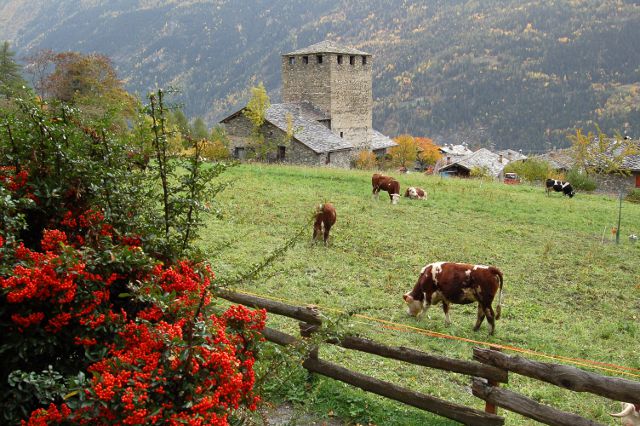Valle d’Aosta is located in the North-West of Italy and and borders, among the Italian regions, exclusively with Piedmont, while towards Europe it borders with Switzerland and France.
The only province, which also acts as the regional capital, is Aosta from which the region takes its name.
In Valle d’Aosta people can go to ski, in Courmayeur, Cervinia and in many other places in the valley.
But it also a good chance for beautiful walks in the mountains: you have such an embarrassment of riches here!
But Valle d’Aosta is also famous for its castles, some of which can be visited such as the Fenis Castle, the Forte di Bard or the Gamba Castle which also host art exhibitions
Aosta is a city where nature and history merge. There are many legacies of the ancient Roman domination, including the Arch of Augustus, the Porta Pretoria, the theater, the forum and the city walls. The Sant’Orso religious complex is very interesting, which in late January hosts a large local craft fair. Handicraft lovers must visit the museum of traditional craftmanship in Fenis.
See some events or interesting places to visit in Valle d’Aosta>>>
Do you know that in Valle d’Aosta is located the highest botanical garden in Europe? Open only from June to September>>>
And if you are hungry, why not taste the typical food of the region>>>
SOME MORE INFORMATION
The flag of the Region is made up of a rectangular drape, vertically divided into two equal black and red sections. Its origin dates back to the years of the Resistance.
The coat of arms of Valle d’Aosta depicts a rampant lion.
The official anthem is the popular song “Montagnes valdôtaines“, an adaptation by the poetess Flaminie Porté of the song composed around 1835 by the Parisian Alfred Roland.
The native language is Franco-Provençal but today the most widespread language is Italian. Almost everyone knows French.
THE MOST BEAUTIFUL VILLAGES OF ITALY IN VALLE D’AOSTA
In the Province of Aosta:
Etroubles, an open-air museum
Bard, under a loose roof (typical stone slabs used for roofs)



